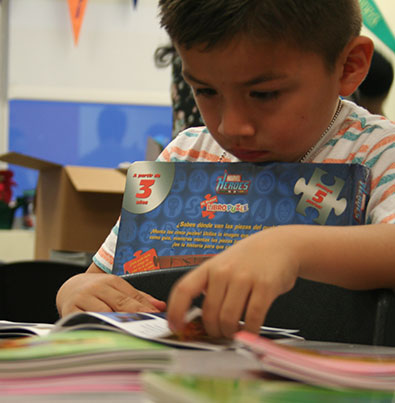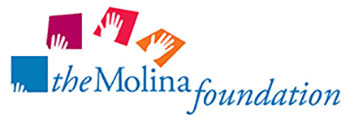The Need
Social Determinants of Health
Social determinants of health are the conditions in which people are born, grow, live, work, and age. Social determinants of health are mostly responsible for heath inequities – the unfair and avoidable differences in health status seen within, and between, communities.1

Social determinants of health include factors like:
- Economic Stability (e.g. employment, income, expenses, debt, medical bills)
- Neighborhood and Physical Environment (e.g. housing, transportation, safety, parks, playgrounds, walkability)
- Education (e.g. literacy, language, early childhood education, vocational training, higher education)
- Food (e.g. hunger, access to healthy options)
- Community and Social Context (e.g. social integration, support systems, community engagement, discrimination)
- Health Care System (e.g. health coverage, provider availability, linguistic and cultural competency)2
Researchers found that social determinants, including education, racial segregation, social supports, and poverty, accounted for over a third of total deaths in the United States in a year. In 2000, approximately, 245,000 deaths in the United States were attributable to low education, 176,000 to racial segregation, 162,000 to low social support, 133,000 to individual-level poverty, 119,000 to income inequality, and 39,000 to area-level poverty.3
Social Determinants of Health Starting in Childhood in the United States
Social determinants of health in the United States impact the lives of millions of children every day:
- Growing Up in Poverty. In 2014, 22% – or more than 15.7 million – children in the United States were living in poverty.4 More than 7.8 million of these children are infants and toddlers, under age 3.5 Poverty can impede cognitive development and a child’s ability to learn. It can also contribute to behavioral, social and emotional problems, and can lead to poor health outcomes.
- Living in High-Poverty Neighborhoods. Between 2010-2014, 14% – 10.3 million – lived in high-poverty areas nationwide. High-poverty neighborhoods are much more likely to have worse health outcomes, higher crime rates and violence, inadequate schools, and limited access to job opportunities.6 They are more likely to be unsafe, have exposed garbage or litter, or have poor or dilapidated housing, and vandalism. These neighborhoods are also less likely to have sidewalks, parks or playgrounds, recreation centers, or a library.7
All too often these factors alter the trajectory and outlook for millions of children and families:
- Struggling with Childhood Health Problems. Children from low-income families have a higher incidence of health problems that interfere with learning including: chronic asthma, poor hearing, vision and dental problems, Attention-Deficit/Hyperactivity Disorder (ADHS), frequent headaches, heart conditions, kidney disease, epilepsy, and digestive problems. Children are less likely to be in “excellent” or “very good” health at 9 and 24 months if they come from low-income families, racial/ethnic minority groups, homes where English is not spoken, and /or mothers with low education levels.10

- Not Hearing Enough Words. By age 3, children from the poorest families have typically heard 30 million fewer words than children from the wealthiest families. Young children whose parents read to them, tell stories, or sing songs tend to develop larger vocabulaties, become better readers, and perform better in school, while children who lack this stimulation tend to arrive at school with measurably weaker language, cognitive, and memory skills.11 By the time children from low-income families enter kindergarten,
they are typically 12-14 months below national norms in language and pre-reading skills.12 - Lacking Access to Books. One study found that in middle income neighborhoods one may find 13 age-appropriate books in a home per child; in low-income neighborhoods, the ratio plummets to 1 book for every 300 children.13 Being surrounded by books and a culture of reading make a significant difference. Research suggests a child who hails from a home with 25 books will, on average, complete two more years of school than would a child from a home without any books at all.14
The Molina Foundation is committed to improving health outcomes, especially healthy child development, starting with a focus on access to literacy, language, and early childhood education in underserved communities across the United States. Through The Molina Foundation’s programs, we work every day to build and strengthen word-rich, and subsequently healthier, homes across the country.
1 World Health Organization, http://www.who.int/social_determinants/sdh_definition/en/
2 Beyond Health Care: The Role of Social Determinants of in Promoting Health and Health Equity.Harry J. Heiman and Samantha Artiga. The Henry J. Kaiser Family Foundation, November 4, 2015, http://kff.org/disparities-policy/issue-brief/beyond-health-care-the-role-of-social-determinants-in-promoting-health-and-health-equity/
3 Galea S, Tracy M, Hoggatt KJ, DiMaggio C, Karpati A. Estimated deaths attributable to social factors in the United States. Am J Public Health. 2011;101(8):1456–1465
4 2016 Kids Count Data Book, Annie E. Casey Foundation, http://www.aecf.org/m/resourcedoc/aecf-the2016kidscountdatabook-2016.pdf
5 Yang Jiang, Maribel R. Granja, and Heather Koball, Basic Facts about Low Income Children. National Center for Children in Poverty. January 2017. http://www.nccp.org/publications/pub_1171.html.
6 2016 Kids Count Data Book, Annie E. Casey Foundation, http://www.aecf.org/m/resourcedoc/aecf-the2016kidscountdatabook-2016.pdf
7 Gopal K. Singh, Mohammad Siahpush, and Michael D. Kogan, Neighborhood Socioeconomic Conditions, Built Environments, and Childhood Obesity”, Health Affairs 29, no. 3 (March 2010):503-512, doi: 10.1377/hlthaff.2009.0730. Conditions, Built Environments, And Childhood Obesity. Health Affairs. 29(3): 503-512.8 2016 Kids Count Data Book, Annie E. Casey Foundation, http://www.aecf.org/m/resourcedoc/aecf-the2016kidscountdatabook-2016.pdf.
8 2016 Kids Count Data Book, Annie E. Casey Foundation, http://www.aecf.org/m/resourcedoc/aecf-the2016kidscountdatabook-2016.pdf.
9 “Starting School at a Disadvantage: The School Readiness of Poor Children”, Julia B. Isaacs, Brookings Institution, March 2012
10 EARLY WARNING! Why Reading By the End of Third Grade Matters. A KIDS COUNT Special Report from the Annie E. Casey Foundation. 2010. http://www.nmvoices.org/attachments/natl_kc_learn_to_read_full_rpt_5-10.pdf
11 “A Quiet Crisis: The Urgent Need to Build Early Childhood Systems and Quality Programs for Children Birth to Age Five,” policy statement by the Council of Chief State School Officers (November 2009). www.ccsso.org, aecf.org
12 “Starting School at a Disadvantage: The School Readiness of Poor Children”, Julia B. Isaacs, Brookings Institution, March 2012
13 Susan B. Neuman and David K. Dickinson, ed. Handbook of Early Literacy Research, Volume 2. New York, NY: 2006
14 Evans, M., Kelley, J., Sikorac, J., & Treimand, D. (2010). ͞Family scholarly culture and educational success: Books and schooling in 27 nations”. Research in Social Stratification and Mobility, 28, 171–197.




